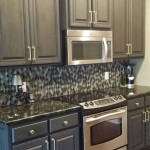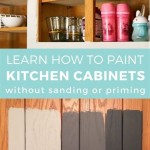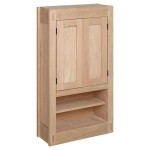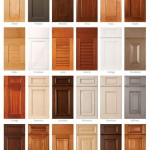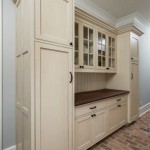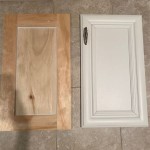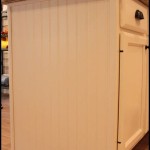Custom Built Cabinets: DIY Ideas for Your Home
Building custom cabinets is a rewarding DIY project that offers immense satisfaction and allows you to personalize your home with unique storage solutions. Whether you're looking to upgrade your kitchen, bathroom, or any other space, custom cabinets add a touch of elegance and functionality. This article will explore various DIY ideas for building custom cabinets, covering design considerations, materials, tools, and step-by-step instructions.
Design Considerations for Custom Cabinets
Before embarking on your cabinet-building journey, it's essential to carefully consider the design aspects. This includes determining the cabinet's purpose, size, style, and materials. For example, kitchen cabinets will require different features and dimensions than bathroom cabinets.
Start by measuring the space where you intend to install the cabinets. Consider the available width, height, and depth, and factor in any obstacles or existing fixtures. Determine the number of cabinets you need and their specific functions. For instance, you may require base cabinets, wall cabinets, drawer cabinets, or a combination of these.
Choose a style that complements your existing decor. Consider traditional, modern, rustic, or contemporary designs. You can also explore various finishes, such as paint, stain, veneer, or laminate, to achieve the desired look. Remember to select materials that are durable, moisture-resistant (if necessary), and easy to maintain.
Materials and Tools for Building Custom Cabinets
The choice of materials plays a significant role in the durability and longevity of your cabinets. Common materials for cabinet construction include plywood, MDF (medium-density fiberboard), and solid wood. Plywood is a versatile option known for its stability and strength, while MDF offers a smooth, consistent surface that's ideal for painting or laminating. Solid wood, such as oak, maple, or cherry, adds a touch of elegance and warmth but can be more expensive and challenging to work with.
Once you've chosen your materials, gather the necessary tools for the project. These may include:
- Measuring tape
- Level
- Circular saw or table saw
- Jig saw
- Router
- Drill
- Screwdriver
- Clamps
- Sandpaper
- Sander
- Wood glue
- Screws
- Hinges
- Drawer slides
- Cabinet hardware (knobs, pulls, etc.)
Having all the necessary tools at hand will streamline the process and ensure a smooth workflow.
Step-by-Step Instructions for Building Custom Cabinets
Building custom cabinets involves several steps, each requiring careful attention to detail. Here's a general guide:
- Planning and Design: Create detailed drawings or sketches of your cabinets, including dimensions, features, and hardware placement.
- Cutting Materials: Using your saw, precisely cut the materials for the cabinet frame, shelves, doors, and drawers according to your measurements.
- Assembling the Frame: Join the cabinet frame pieces using wood glue and screws. Employ clamps to ensure proper alignment and stability.
- Adding Shelves and Drawers: Install shelves and drawers using drawer slides and appropriate hardware.
- Building the Doors: Cut and assemble the cabinet doors, paying attention to the hinges and handles.
- Finishing Touches: Sand the cabinet surfaces smoothly, apply paint or stain to your desired finish, and install hardware.
- Installation: Mount the cabinets to the wall or existing structure using appropriate mounting methods.
Throughout the process, take your time, follow instructions carefully, and employ safety precautions when using power tools.
Tips for Successful Custom Cabinet Building
Here are some additional tips to enhance your DIY cabinet building experience:
- Start with simpler projects: If you're new to woodworking, begin with smaller cabinets to gain experience and confidence.
- Practice on scrap wood: Before cutting your final materials, practice on scraps to ensure accurate cuts and proper tool operation.
- Use a work table: Working on a stable work table provides support and promotes accuracy during assembly.
- Measure twice, cut once: Accuracy is crucial in woodworking. Double-check your measurements before cutting and avoid rushing.
- Seek professional help: If you're unsure about a particular aspect of the project, don't hesitate to consult with experienced woodworkers or DIY professionals.
By following these tips, you can create beautiful and functional custom cabinets that enhance your home's aesthetics and storage capabilities.

How To Diy Built In Cabinets For Home Office

More Like Home How To Turn Stock Cabinets Into Diy Built In S

How To Diy Built In Cabinets For Home Office

Diy Built In Office Cabinet Classy Glam Living

Dining Room Built Ins Part 1

Our Custom Cabinet Built Ins Jenna Sue Design

Diy Home Office Built Ins Part 2
:max_bytes(150000):strip_icc()/artsychicksrule-1b32955fdaff4503874ab5882bd3af0b.jpg?strip=all)
How To Make Diy Built In Bookshelves 20 Ideas

How To Diy Built In Cabinets For Home Office

Our Custom Cabinet Built Ins Jenna Sue Design
Related Posts

